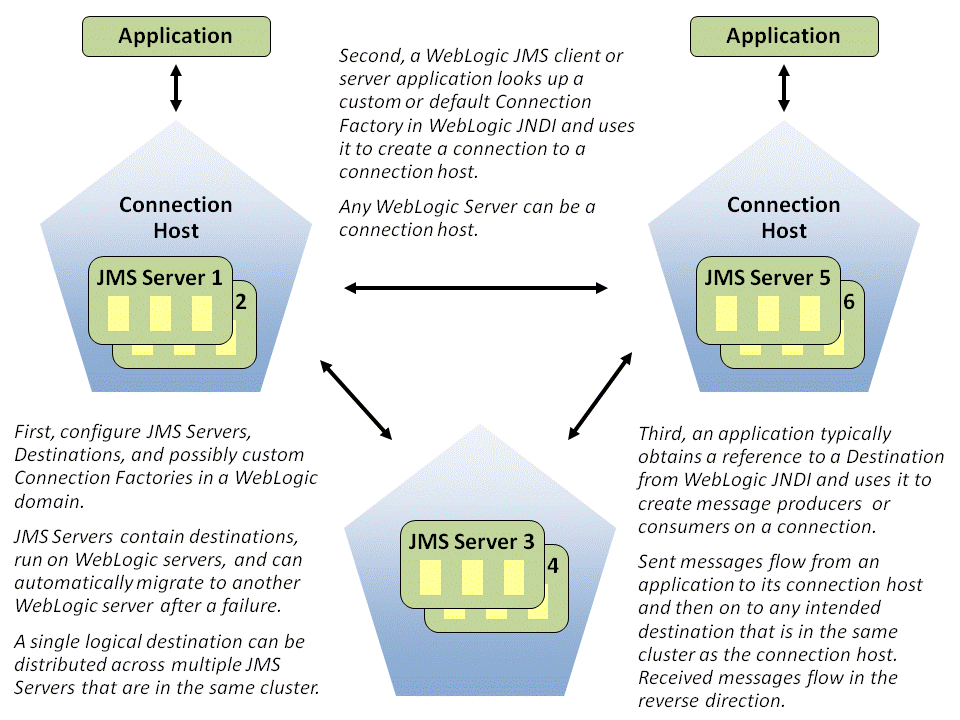9 WebLogic Server Messaging
The Java Message Service (JMS) is a standard API for accessing enterprise messaging systems. JMS simplifies application development by providing a standard interface for creating, sending, and receiving messages.
This chapter includes the following topics:
Overview of JMS and WebLogic Server
http://www.oracle.com/technetwork/java/jms/index.html. WebLogic JMS provides numerous WebLogic JMS Extensions that go beyond the standard JMS APIs.
Java Message Service
An enterprise messaging system enables applications to asynchronously communicate with one another through the exchange of messages. A message is a request, report, and/or event that contains information needed to coordinate communication between different applications. A message provides a level of abstraction, allowing you to separate the details about the destination system from the application code.
The Java Message Service (JMS) is a standard API for accessing enterprise messaging systems that is implemented by industry messaging providers. Specifically, JMS:
-
Enables Java applications that share a messaging system to exchange messages
-
Simplifies application development by providing a standard interface for creating, sending, and receiving messages
WebLogic JMS supports both client and server applications; in addition to Java, it has client libraries for C APIs and Microsoft .NET. WebLogic JMS accepts messages from producer applications and delivers them to consumer applications. For more information on JMS API programming with WebLogic Server, see Developing JMS Applications for Oracle WebLogic Server. For information about JMS API programming for WebLogic Server hosted consumer applications, see Developing Message-Driven Beans for Oracle WebLogic Server.
WebLogic JMS Message Workflow
The following figure illustrates the WebLogic message workflow.
For information on the major components of the WebLogic JMS architecture, see WebLogic JMS Architecture in Developing JMS Applications for Oracle WebLogic Server.
Roadmap for WebLogic Server Messaging
The WebLogic Server documentation set includes several introductory, procedural, and reference topics, including examples, that help you understand how to develop and administer WebLogic JMS resources.
Table 9-1 Roadmap for WebLogic Server Messaging
| Major Task | Subtasks and Additional Information |
|---|---|
|
Learning more about WebLogic Server messaging |
|
|
Getting started with WebLogic JMS |
|
|
Using new WebLogic JMS features |
|
|
Programming WebLogic messaging |
|
|
Understanding clients for WebLogic messaging |
|
|
Configuring WebLogic messaging |
|
|
Using the WebLogic Server Administration Console to configure WebLogic messaging |
|
|
Performance and tuning |
|
|
Reference |
